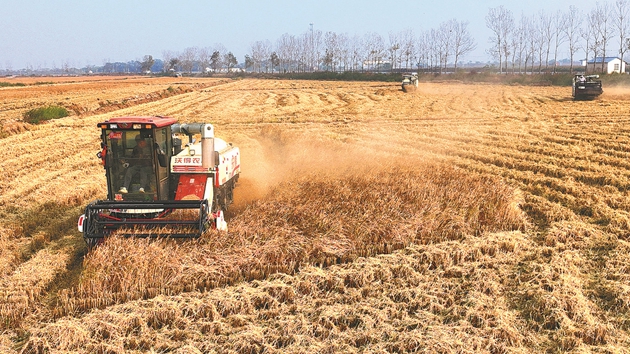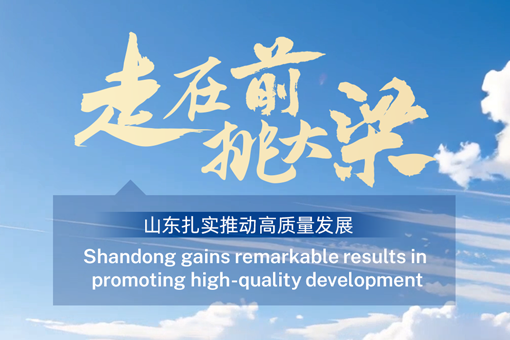Seeds of hope spring from seawater rice
By ZHANG ZHOUXIANG and JIAO JIE| (China Daily)| Updated : 2023-03-08
Print Print
Seawater rice is harvested at a farm in Lianyungang in November. GENG YUHE/FOR CHINA DAILY
"Most of the saline land in the northwest is located in dry or very dry regions," he said.
Wang Qingxue, 60, a farmer in Dongying city, Shandong province, said: "The saline soil on my family's arable land is near the Yellow River, while that of my cousin is near Bohai Bay. Both areas can be exploited, as they are close to wetlands, so this soil is not such a big problem."
Dry areas of the country are the biggest problem. For example, in Lankao county, Henan province, saline soil accounts for 36 percent of the total agricultural land. Combined with wind and sand, this situation has posed major challenges to local agriculture.
A vicious circle formed. Dry weather turned the soil saline, which meant it could not support plant or crop growth. As a result, there was no natural barrier against the wind, while sand that accumulated worsened the condition of the soil, so it was unable to retain water.
Even good arable land was affected, as evidenced by Shen Tianmin, a wheat breeding expert from Kaifeng city, Henan, who said in 1962 that wheat production in Lankao was only 12 kilograms per 0.67 hectares.
Two years later, Jiao Yulu, 42, the Lankao Party chief, who led locals in transforming 6,000 hectares of saline soil into arable land, died from liver cancer. In 2017, Lankao eradicated poverty after transforming a high percentage of saline soil into arable land to support crop growth.

 Xi's Moments
Xi's Moments  Shandong gains remarkable results in promoting high-quality development
Shandong gains remarkable results in promoting high-quality development  2025 National Two Sessions
2025 National Two Sessions